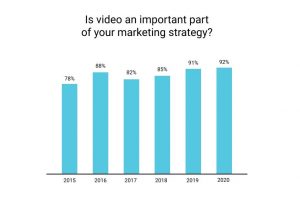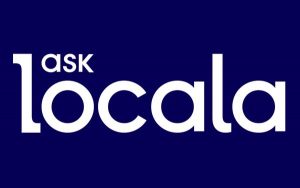Amid ongoing transformation, effective communication is the most important investment CMOs can make to adapt and grow this year and beyond

Marketing leaders know that success today increasingly comes down to agility. Now more than ever, brands must quickly and compellingly engage audiences across a growing number of channels to drive results.
But one critical—and overlooked—factor hampers the ability to deliver on these goals: ineffective communication. When communications break down, it creates tremendous costs for marketing organizations by eroding engagement with customers and prospects, decreasing alignment around brand messaging and goals, and preventing productivity and growth. For example, even well before the pandemic, poorly written communication was costing businesses a staggering $ 400 billion annually in lost productivity.
This is particularly true in functions like marketing that rely on clear, consistent, and engaging interactions and content to achieve outcomes. And now, new customer and workforce demands are amplifying the cost of poor communication on marketing teams—and the opportunity that awaits should they overcome it.
Why effective communication is the catalyst of meeting new demands
The marketing function has undergone monumental shifts in the past year, leaving leaders grappling with an array of challenges that make it difficult to focus on long-term growth. This is why Gartner found nearly three-fourths (73%) of CMOs planned to fall back on low-risk, low-return strategies this year rather than look to develop new markets.
For one, the explosion of e-commerce and omnichannel in the past year means marketers are managing an increasing number of touchpoints to engage audiences. Dealing with this influx is challenging enough, but with the ongoing impacts of the pandemic, consumers and buyers also expect more quality, personalization, and empathy from brands. These trends mean marketers need to improve both the quality and efficiency of communications to meet demands.
Moreover, increasing globalization and the shift to remote and hybrid work are creating new challenges for marketing teams in staying aligned and on-brand. In fact, 35% of digital marketing leaders said the biggest challenges this year would come from within their organization. Working across more places and contexts creates more opportunities for disjointed interactions, which leaders must overcome to maintain efficient operations and a consistent brand experience.
In the face of these changes, CMOs and marketing leaders have a significant opportunity to reinvent their organizations—and this starts with effective communication. Communicating clearly and consistently across channels not only ensures the right messages land but also reduces costly slowdowns, enhances the customer journey, and drives the ability to scale.
The business case for investing in effective written communication
In particular, written communication is on the rise and offers an immense, untapped opportunity to up-level marketing performance. Consider that content marketing and production have surged during the pandemic, with no signs of slowing down. Over 300 billion emails are also sent and received each day—and that’s just one channel in the marketing toolkit.
With rising content volumes and billions of written interactions daily, improving all written communication adds significant gains in both quality and productivity. And while managing the volume may seem daunting, new technology and AI capabilities are available that can help easily enhance communications across the board.
Let’s consider a real-world example. Frost & Sullivan, the global consulting and research firm, needed to more efficiently produce engaging research reports and marketing materials for senior buyers. With real-time writing assistance from Grammarly Business, the team receives in-line feedback around proper language, style, and tone to develop impactful content more quickly. The results were immediate, allowing the firm to cut report editing time by 66% and complete 500+ additional projects in a year.
Grammarly Business continues to help the firm maintain high quality and efficiency as it scales the team to support expanded marketing efforts.
“Our focus is on crafting the highest quality, most compelling narratives for our global clients driving innovation at the forefront of their industries,” said Tonya Fowler, Global Research Vice President of Best Practice at Frost & Sullivan. “With the demands of the past year, the advanced writing assistance of Grammarly Business has been invaluable in maintaining that high quality as we quickly onboard significant numbers of new global employees, many of whom are non-native English speakers. Because the tool serves as a helpful writing coach for these employees, we’ve been able to avoid investing in dedicated training while increasing our productivity in managing a higher volume of content.”
Assessing the impact of effective communication
The value is clear. So, where can leaders start in assessing the impact of better communication? They can begin by asking themselves three questions:
- What business outcomes are most critical in the coming year? (YoY growth, higher output/volume, lower costs, etc.)
- In what ways are communication issues impacting these goals? (slow or off-brand communications, inefficient content production, inability to manage growing volumes, etc.)
- What are the consequences if these factors are not addressed? (trade-offs between speed and quality, high costs, slowed growth, employee churn, etc.)
If leaders find that communication-related challenges impact one or more of their objectives, it’s time to address it. The cost of ineffective communication only continues to grow—but so does the value to be gained by overcoming it.
The bottom line
In the scope of challenges facing marketing leaders, communication may not rise to the top of their list. But in a world where success increasingly comes down to connectivity and engagement, investing in effective communication will be the catalyst of long-term adaptability and growth.
Grammarly Business will be hosting a webinar, “Learn about the biggest hidden risk to your business. Hint: It’s not what you think,” on Thursday, Oct. 21, 2021, at 11 a.m. PT to discuss the growing business impact of effective communication, including insights from Grammarly’s Dorian Stone and Frost & Sullivan’s Tonya Fowler. Learn more and register.
For more about why investing in effective communication is critical to marketing success, visit www.grammarly.com/business.
This article was written by Dorian Stone, head of organization revenue, Grammarly.
The post The greatest hidden cost to marketing success: Ineffective communication appeared first on MarTech.
(40)
Report Post




